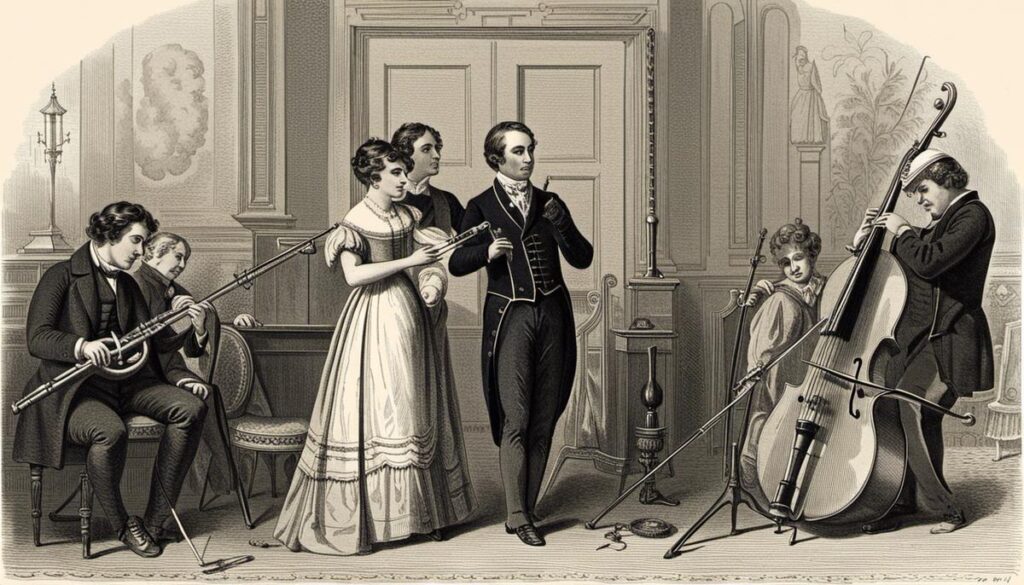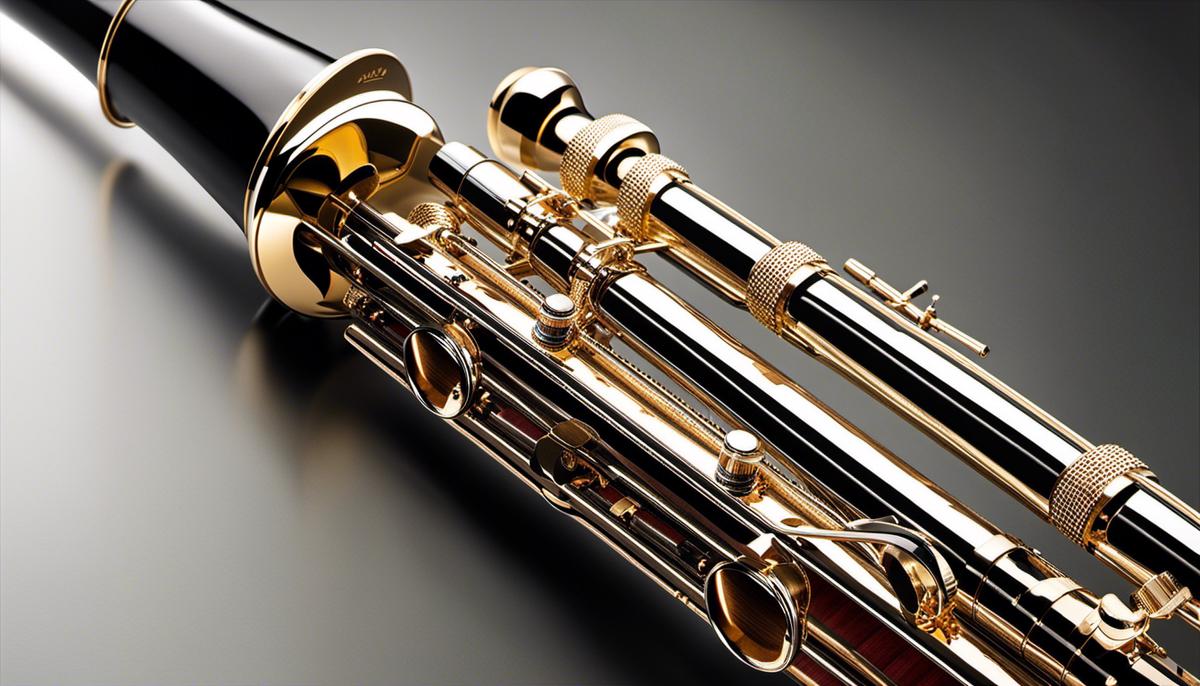Table of Contents
Introduction to History of the Bassoon
The history of the bassoon dates back to the Renaissance era, meandering through the historical twists and turns that have shaped this unique instrument. The bassoon is known for its distinctive tenor and bass sound, has roots in the dulcian, curtal, and even earlier wind instruments like the shawm.
This article starts at the beginning of the story, then sheds light on the vital changes and advancements across Classical, Romantic, and modern periods that led to the instrument we know today.
Origins and Early Developments of the Bassoon
The bassoon, a reed instrument distinguished by its distinctive tone and notable for its playing versatility, has a rich and intriguing history that dates back to the Renaissance period. Its development over time has been influenced by changes in musical trends, along with the evolving needs and preferences of the musicians who played it.
Early Ancestors of the Bassoon
The bassoon’s earliest known predecessor is the dulcian, a double-reed instrument commonly used in the late Middle Ages and Renaissance period. The dulcian had a curvilinear body, piercing sound, and was crafted from a single piece of wood. Playing this instrument required considerable breath control and deft fingering, which made it challenging for many musicians.
Another ancestor of the bassoon may have been the shawm, a conical bore, double reed instrument of the late medieval and Renaissance periods. This instrument was known for its strong and penetrating sound, which made it ideal for outdoor performances.
In the late 16th century, the curtal, also known as the dulcian in England, featured a similar design to the bassoon with its double reed and conical bore. This instrument had a lower pitch than the shawm, making it a preferred choice for indoor performances.
The Birth of the Bassoon
In the early 17th century, the transformation from these earlier woodwind instruments to what we recognize as a bassoon began. Martin Hotteterre and Jean Hotteterre, French instrument makers of the era, are generally credited with creating the bassoon’s early form around this time. Their developments included dividing the body of the woodwind instrument into several sections, allowing for a greater range and flexibility of pitch.
This first iteration of the bassoon, often referred to as the baroque bassoon, retained much of the dulcian’s structure. However, the instrument was now constructed from long maple or pearwood tubes, which could be disassembled for easier transportation—certainly a practical innovation for traveling musicians. The baroque bassoon was also curved at the top, forming a semi-circle that could be easily held by the musician.
Changes in the 18th and 19th Centuries
The bassoon underwent several significant changes during the 18th and 19th centuries. German instrument maker Johann Heinrich Grenser developed a model with a broader bore and larger tone holes, which resulted in a louder, fuller sound. This version, referred to as the classical bassoon, was better suited to the evolving orchestral music of the period.
Further modifications occurred in the 19th century, most notably by the Belgian instrument maker, Antoine-Joseph “Adolphe” Sax, creator of the saxophone. Sax’s bassoon had upwards of 24 keys, expanded range, and employed metal in its construction.
By the early 19th century, instrument makers in Germany and France diverged in their approach to bassoon manufacturing. The German (or Heckel) system, named after famous maker Wilhelm Heckel, boasted around 17 keys and maintained its popularity in the English-speaking countries. The French (or Buffet) system, popular in Italy and France, had fewer keys and different fingerings.
Significant changes have punctuated the history of the bassoon, contributing not only to its character but also to its defining identity within orchestras of the current era. As each shift in musical preferences occurred, it prompted further innovations in bassoon design and function, ensuring that the instrument’s evolution was harmoniously aligned with the musical environment in which it was embedded.
The Classical and Romantic Eras: The Rise of the Bassoon
The Classical Era: The Bassoon Reinvented
During the Classical era, spanning approximately 1750-1820, the bassoon underwent a remarkable transformation as instrument makers dared to reimagine its design to enhance its range and expressive capabilities.
Carl Almenraeder, a German bassoonist and composer, was a major contributor to the evolution of the bassoon at this time. Almenraeder advanced the design of the bassoon by adding more keys to expand its range and improve intonation. His innovative iteration of the bassoon also featured a tapering bore, the hollow segment of the instrument that holds vibrating air, offering players an elevated level of control over tone and dynamic range.
The reimagined version of the bassoon quickly secured a place in classical compositions. Renowned composer Wolfgang Amadeus Mozart, for instance, incorporated the bassoon significantly in his symphonies and chamber music. Of his pieces, the Bassoon Concerto in B flat major remains an iconic piece in the bassoon’s repertoire to this day.
The Romantic Era: Reaching New Heights
The design of the bassoon continued to evolve during the Romantic era (roughly 1820-1900), allowing it to rise to new heights of expressivity and technical prowess.
Two significant changes in this era were the introduction of the German system and the French system of the bassoon. The German system, also known as the Heckel system, is named after Wilhelm Heckel, a German instrument maker, who along with his sons, further refined Almenraeder’s design improvements. The Heckel system incorporated more keys and intricate mechanical linkages, resulting in a more robust and sonorous sound.
Concurrently, Clement and Frederic Triebert, French instrument makers, developed the French system of bassoon, also known as the Buffet system. The French system adopted a simpler keywork structure and a reed that produced a brighter and more flexible sound, making it more popular among French musicians.
Both these systems contributed to an expanded repertoire for the bassoon during the Romantic era. Composers like Richard Wagner and Johannes Brahms showcased its expanded range, melodic flexibility, and intricate rhythms in their symphonies and operas, thereby further accelerating the bassoon’s prominence.
Delving into the evolution of the bassoon’s design and repertoire across the Classical and Romantic eras involuntarily draws attention to the compositional and instrumental progressions of the time. The tireless endeavors by craftspeople of musical instruments and composers initiated the transformation of the bassoon’s design, and secured a prominent position for it as an integral part of Western orchestral music.

The Bassoon in the 20th and 21st Centuries
20th Century Developments for the Bassoon
As we advance into the 20th Century, the bassoon experienced a high degree of transformation. With the inception of increasingly sophisticated musical genres, composers seized the opportunity to experiment with the full spectrum of capabilities the bassoon could offer, pushing it beyond its conventional roles in orchestral ensembles and classical solo pieces. Notable bassoonists of this era, such as Maurice Allard and Bernard Garfield, inspired a wave of contemporary composers to pen technically demanding compositions that expanded the instrument’s agility, range, and technical potential.
The bassoon also discovered a contrasting role for itself in the world of jazz music, exhibiting its intrinsic versatility and adaptability to disparate genres. A herald of 20th-century jazz music, Yusef Lateef, strongly incorporated the bassoon in his pieces. His expressive playing style imbued with exotic undertones showcased the unique sound and texture of the bassoon to jazz enthusiasts. The legacy of his groundbreaking work continues to inspire jazz bassoonists across generations.
Functioning parallelly to the shifts in playing styles and genres of the 20th Century, were paramount adaptations made to the physical structure of the bassoon itself. Fox Products Corporation, an American musical instrument manufacturer established in 1949, led these transformational efforts. The corporation’s contributions to design alterations and manufacturing process enhancements, especially in key mechanics and bore design, improved various working aspects of the bassoon, such as its tuning, response, and tonal quality. These enhancements provided musicians with a means to convey more emotionally nuanced performances.
Bassoon in the 21st Century
As we moved into the 21st Century, the application of new technology to bassoon production and performance has reached an unprecedented level. The implementation of 3D printing technology, for example, allows for precise manufacturing, creating uniformity among instruments and significantly reducing the production cost.
In terms of performance, advancements in digital recording and sound amplification technologies have allowed for increased experimentation with the bassoon’s sound in both live performance and recorded media. Musicians can now amplify, distort, or alter the bassoon’s sound in real time during performances, opening up new possibilities for the instrument’s role within various music genres.
In the realm of education, the rise of video sharing platforms and online learning tools have made bassoon lessons more accessible. This has fostered a global community of bassoon enthusiasts, where formerly isolated players can now share techniques, compositions, and performances.
The bassoon’s adaptability and versatility across a range of genres have seen the instrument evolve from an orchestral background role to a dynamic solo instrument, capable of both melodic and percussive performances. Notable bassoonists such as Sophie Dartigalongue, principal bassoon with the Berlin Philharmonic, and Pascal Gallois, recognized for his interpretation of contemporary music, have emerged as leaders in the field, pushing the boundaries of what the bassoon can do.
In summary, the 20th and 21st Centuries have yielded significant transformations for the bassoon. From changes in its physical structure and improved manufacturing techniques, to its expanded presence across diverse music genres and the advent of technology-led performance techniques, these eras have proved to be game-changing for this versatile instrument.

Conclusion
With all these perspectives, it’s evident that the bassoon’s history is a captivating story of continual change and adaptation. From its early ancestors, the dulcian and curtal, the emergence as a cornerstone in orchestras during the Classical and Romantic eras, to its versatile connections with different musical genres in the 20th and 21st centuries.
Spruced up with technological advancements that improved its manufacturing and playability, the bassoon has confirmed its place in the annals of musical history. The legacy left by significant figures along the way reminds us all that the bassoon is more than an instrument; it’s a testament of human creativity, endurance, and the perpetual desire to make beautiful music.
Additional Reading
Take some time to check out our other articles:
- Popular Music Industry Careers
- The Metaverse and Music
- 7 Essential Music Production Tools Under $100
- 5 Best Ways To Invest In Music
Breve Music Studios publishes music to Spotify, YouTube Music, Amazon Music and more. Follow our pages on Facebook, Instagram, Twitter, TikTok, and YouTube.
Listen to our ensembles: Breve Orchestra, Breve Music Ensemble, Breve Low Brass Ensemble, Breve Woodwind Ensemble, and Jermaine Harris on Spotify.
